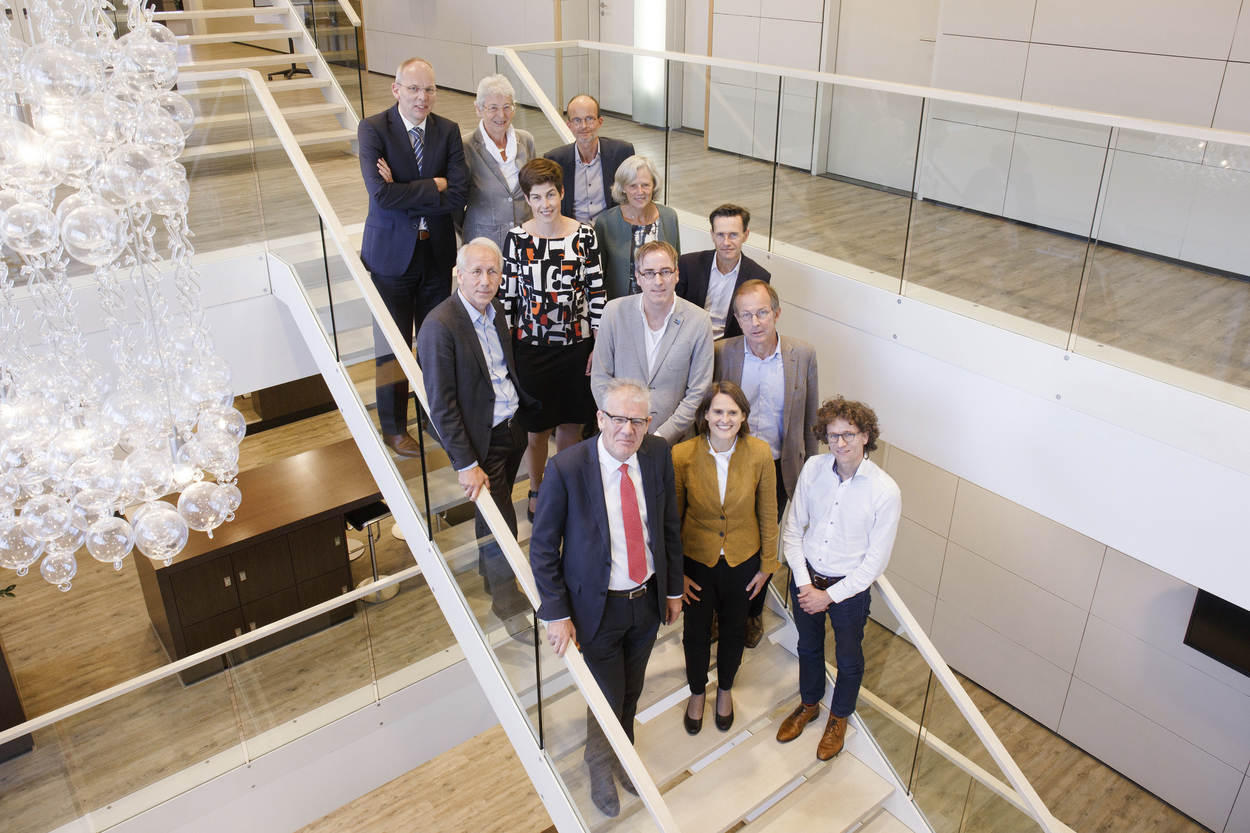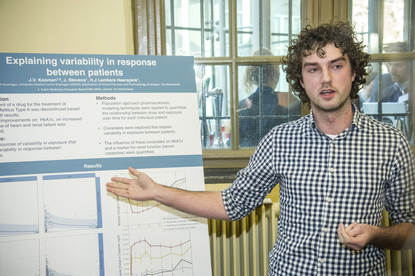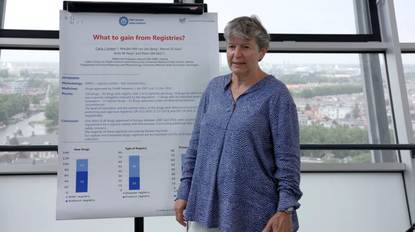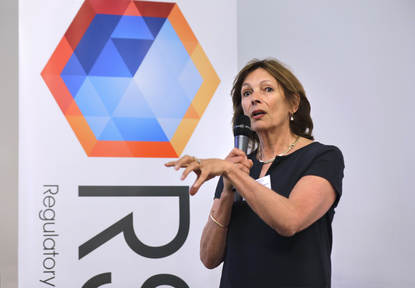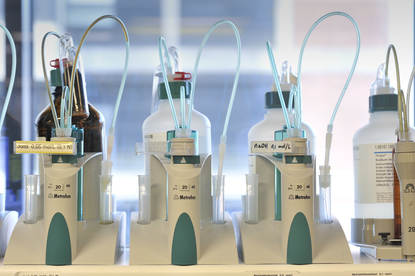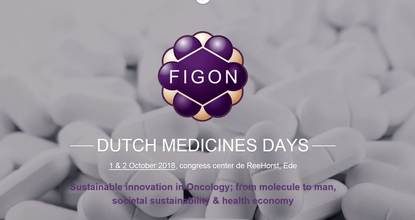
Genetic biomarkers: opportunities for patients and challenges for Regulatory Science
Personalised therapeutics, pharmacogenetics and establishing a new study programme that integrates the fields of pharmaceutical science and medicine are some of the areas that Professor Henk-Jan Guchelaar ̶ head of the Department of Clinical Pharmacology & Toxicology at the LUMC, Professor of Clinical Pharmacology at the University Leiden, and member of the Medicines Evaluation Board (MEB) ̶ is closely involved with. And the focus of all these activities is squarely on the patient.
How is it possible that, as a pharmacist, your first contact with a patient only comes after 6 years of study? That was really ripe for a change! With his own background in mind and with the ambition to once again have a pharmacy program on offer in Leiden, Guchelaar took the initiative to establish a new study programme and really make a difference. That he succeeded in doing so is attested to by the fact that Guchelaar was awarded the 2017 Prize for Educational Excellence in April 2018 for ‘flawlessly integrating the fields of pharmacology and medicine’. He was awarded the prize by the Dutch Society for Clinical Pharmacology and Biopharmacy (NVKFB).
Seeing and treating patients in an early stage is not only a more enjoyable but also a much more effective way of learning.
Not waiting 6 years for first patient contact
‘It’s quite a while ago that I completed my own studies, and the pharmacy profession has changed dramatically in the meantime. It’s now much more focused on treatment and on the patient. The patient no longer visits the pharmacist to simply pick up a box of pills. He is increasingly seeing the pharmacist more as an expert on medicines with whom he can also discuss treatment options.
‘I saw my first patient myself only after I had almost completed my studies and was doing a work placement at a pharmacy. During the previous 6 years, I had never encountered a single patient. It was clear to me that this needed to change. Traditionally, pharmacy falls under the scope of the Faculty of Mathematics and Science, and it’s a discipline that really does fall under the sciences. But at the same time, it’s very much about treatment and focusing on the patient. The added value of such a new pharmacy programme is that it consists of a 3-year Bachelor programme with a strong focus on science followed by a Master’s programme that focuses more on medicine. Students have to do rounds in the hospital and the municipal pharmacy, which is where the profession is actually practised. They have to see patients and come into contact with other persons involved in treating the patient. That is how they learn the trade. And the pharmaceutical aspects are dealt with in the medical subjects on offer. That is not only a more enjoyable but also a much more effective way of learning.’
The MEB consists of a very “mixed bag” of doctors and pharmacists who respect each other and each other’s specific areas of expertise.
Guchelaar has been a member of the MEB since 2016: ‘One of the great things about the MEB is that it consists of a very “mixed bag” of doctors and pharmacists who respect each other and each other’s specific areas of expertise. During the meetings of the Board, we each look at a medical file from our own perspective, and these perspectives complement each other.
That is something I would very much also like to see happen in the field of patient care. The doctor and the pharmacist need to collaborate in considering a problem and to do so with mutual respect in order to ensure that the patient receives the maximum possible benefit from their respective fields of expertise. And if they do so, the results speak for themselves.’
Taking genetic biomarkers into account when prescribing medicines
Guchelaar’s research activities focus on one of the oldest questions in pharmacology: why do different people respond differently to the same medicines? ‘We used to think that bodyweight, sex, physique and environmental factors played a role. We also thought in terms of “blockbusters”, in other words products that were supposed to be effective for everyone. We now know that we also have to take genetics into account. I find it intriguing that hereditary factors play a role here. The identification of genetic biomarkers, which determine specific genetic characteristics, offers major opportunities in terms of determining which biomarkers need to be taken into account when prescribing or delivering medicines. This is especially true in the field of oncology, for example with tumours that have specific mutations for which a specific drug has been developed. The drug in question targets the specific aberration associated with the tumour. This is an example of individual therapy of a very practical nature. Personalised Medicine is one of the key themes of the National Research Agenda, and it is also an area of intense interest for society as a whole.’

Challenge for Regulatory Science
The application of genetic biomarkers offers opportunities but also creates new problems. After all, how do you structure such research studies, asks Guchelaar. ‘If this development continues, you will be using biomarkers to study medicines and/or their effectiveness and safety in increasingly smaller segments of the population. The subject groups will not be measured in thousands of persons but will be divided into groups of 100 subjects with a specific biomarker. So how will you then assess whether the medicinal product in question is actually safe and effective for the population as a whole? After all, the groups being tested will be smaller and smaller. How to deal with such issues presents a challenge for Regulatory Science. Another question is “How do we know that this approach is better than the traditional one?” It’s a new approach that requires innovation, testing, and further research, but it’s difficult to find relevant groups for purposes of comparison. There are so many different kinds of timbers and mutations, and it’s an extremely complicated matter to establish a control group. Ultimately, you could end up with a vast array of different medicinal products that are, by definition, intended only for very small target groups.’
Role of the patient: what is your perspective?
In general, it’s a good idea to also take into account the perspective of the patient in the assessment, explains Guchelaar. ‘But from which perspective are you considering the matter? The patient has different interests and considerations. In case of an incurable condition, the patient will be more likely to take a greater personal risk at the individual level. But the role of an authority is to take a different perspective and consider the population as a whole, which requires different considerations.
Within the framework of the regulatory process, the patient is extremely important and should definitely be heard. In the field of research, it has now become accepted practice to have a patient representative involved in the process. I am now involved in a major European study, and our advisory board also has a patient in its ranks who plays a very important role. He shows us a perspective that we, as researchers, did not consider. That is very useful and should happen more often, on condition that the patient in question is also able to take an objective approach towards the disease.”
Pharmacotherapeutic patient passport prevents side effects
In the Netherlands, a few hundred patients are participating, via their doctor, in a pilot set up by Guchelaar. These patients have a pharmacogenetic passport with their genetic information. This information has already been integrated into the workflow of the persons responsible for prescribing medication and pharmacists. If a specific undesirable combination of genotype and medication is prescribed, the computer shows an alarm, indicating that the dosage needs to be adjusted in order to prevent side effects.
Guchelaar is now carrying out a major project in 7 European countries: ‘We will determine an entire array of pharmacological genes, comprising 50 variations in 13 genes. We selected these because we already have guidelines for them. We will test for half of them beforehand and adjust the medication accordingly; we will not test for the other half. We hope to show that this approach leads to a 30% reduction in the number of serious side effects. We are half-way through the study, and we have noticed that our colleagues from the US find the study interesting but are also a bit nervous. After all, what if we find no effect? Then we will have helped destroy the entire field of pharmacogenetics! But that is also exactly why we are doing the study, namely in search of evidence. The results of literature studies are so promising that, honestly speaking, I don’t really need any more evidence. The fact that people in the US are so nervous only points out how big the impact of our study could be.’
Pharmacogenetics in the patient information leaflet
According to Guchelaar, there is a big difference between the EMA and the FDA with regard to the pharmacogenetic information included on the patient information leaflet. The FDA provides concrete recommendations more often. But both organisations are cautious when it comes to making recommendations for adjusting the dosage. And any recommendations about dosage adjustments must be as concrete as possible if it is to be of any use at all to the prescribing physician, explains Guchelaar.
‘A relatively large amount of literature is available on genotyping, for example with regard to the DPYD Gene in relation to prescribing fluorouracil and capecitabine. If you adjust the dosage based on the results of genotyping, you can prevent serious side effects.
In all honesty, I find the proof of this already so convincing that I would consider the failure to test for this in the hospital to be an instance of malpractice. At present, 65% of the oncologist in the Netherlands have their patients tested beforehand. In Germany, that percentage is still only 1%. I find this incomprehensible.
In such cases, it would be very helpful to include relevant information on the leaflet. The information included now is still too ambiguous. I personally would never take any fluorouracil or capecitabine without being tested beforehand.’

